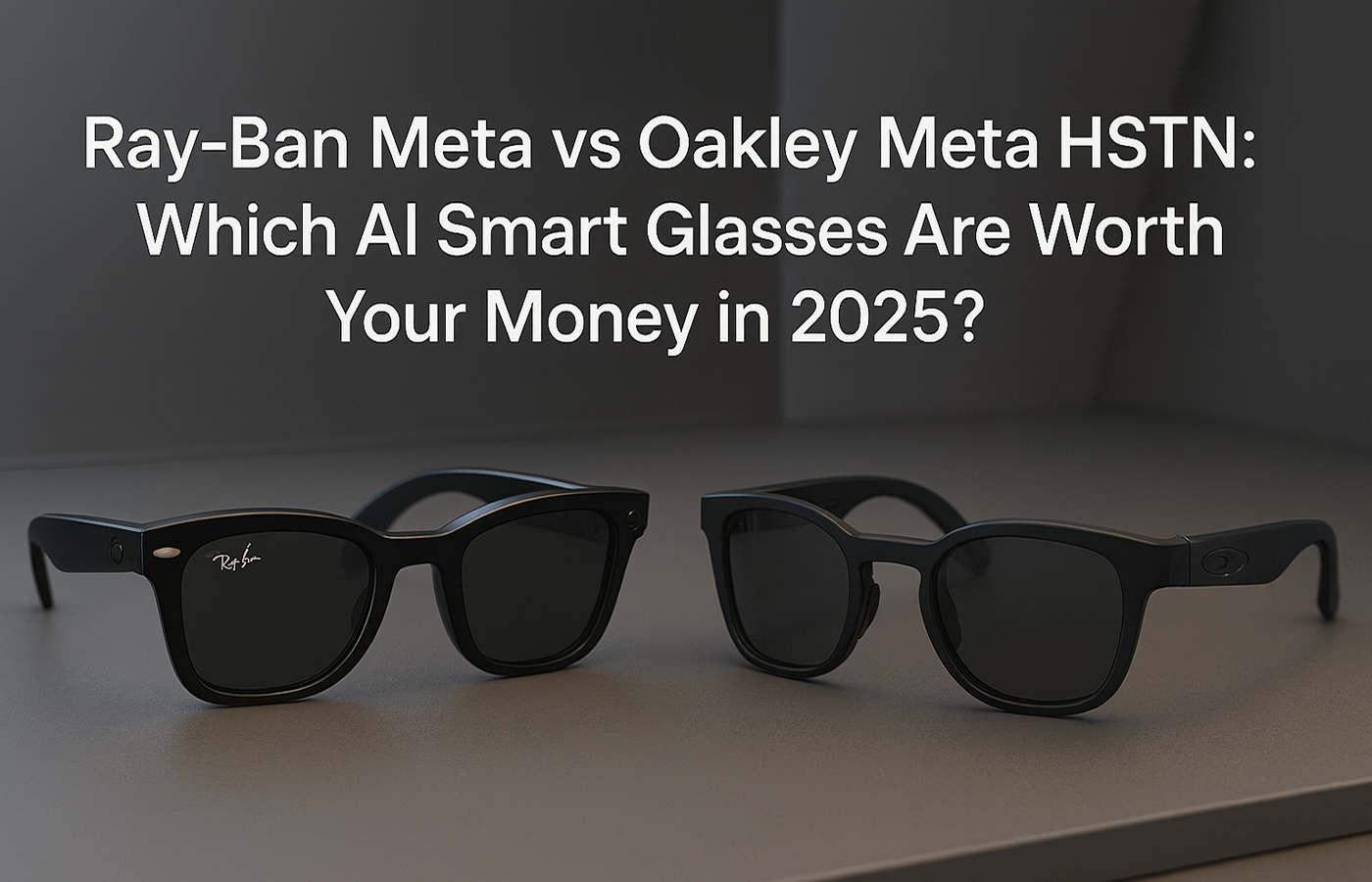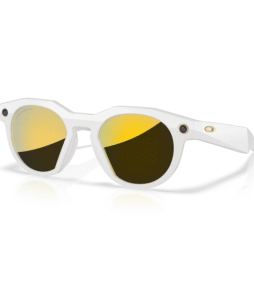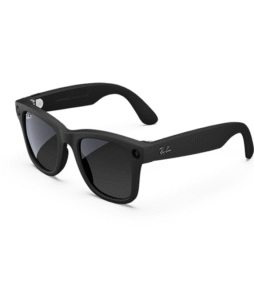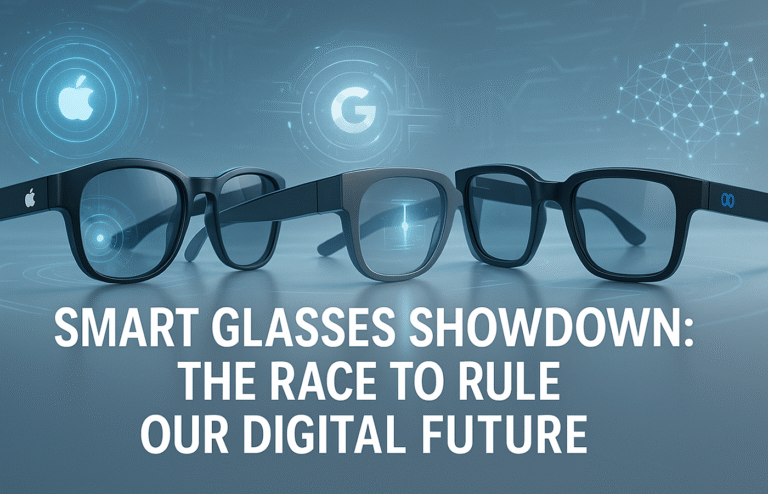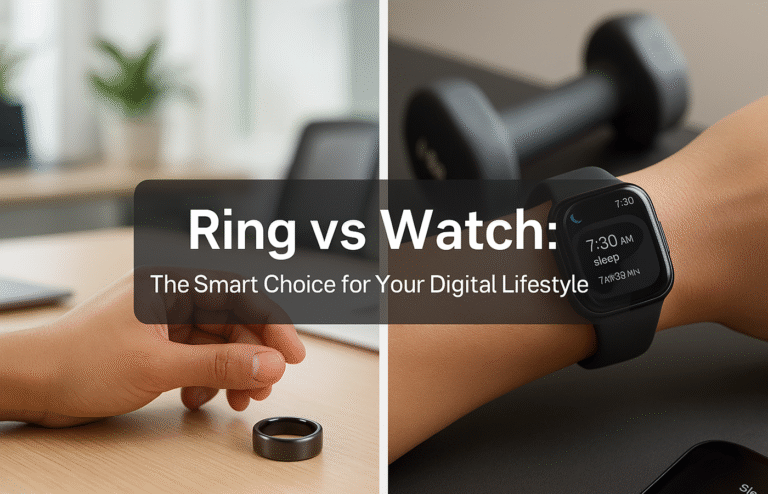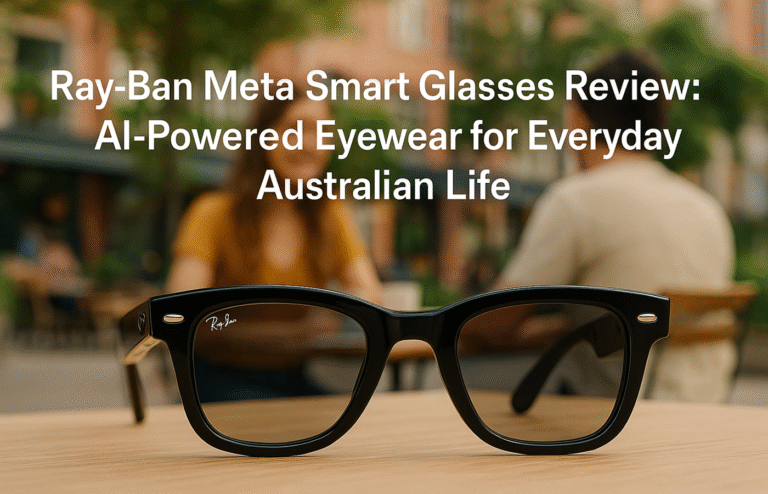Ray-Ban Meta vs Oakley Meta HSTN: Which AI Smart Glasses Are Worth Your Money in 2025?
Meta’s smart glasses ecosystem offers two distinct approaches: Ray-Ban Meta prioritises classic style and everyday use, whilst Oakley Meta HSTN targets athletes with enhanced performance specifications.
Pricing Comparison:
● Ray-Ban Meta: $449-569 AUD (multiple frame styles available)
● Oakley Meta HSTN: $599-749 AUD (single HSTN frame design only)
Key Technical Differences:
● Battery Life: Oakley offers 8 hours vs Ray-Ban’s 4 hours
● Video Quality: Oakley captures 3K resolution vs Ray-Ban’s 1080p
● Water Resistance: Oakley features IPX4 rating; Ray-Ban lacks weather protection
● Lens Technology: Oakley includes PRIZM optimisation for sports performance
Target Audiences:
● Ray-Ban Meta suits urban professionals and style-conscious users seeking discretion
● Oakley Meta HSTN targets athletes, content creators, and active lifestyle enthusiasts
Verdict: Choose based on priorities—Ray-Ban for classic appeal and value, Oakley for performance features and extended battery life.
Smart Specs Showdown: Ray-Ban Meta vs Oakley Meta HSTN – Which AI Glasses Deserve Your Investment?
Meta’s smart glasses ecosystem has rapidly evolved from a single collaboration into a comprehensive lineup targeting vastly different users and budgets. Following the remarkable success of Ray-Ban Meta glasses, which have sold over two million units since their 2023 debut, Meta has expanded its vision with the athletic-focused Oakley Meta HSTN. However, with price differences of up to $200 AUD and significantly different feature sets, choosing between these AI-powered eyewear options requires careful consideration of your lifestyle, budget, and expectations.
Both smart glasses represent the cutting edge of wearable AI technology, seamlessly integrating Meta’s artificial intelligence capabilities into iconic eyewear designs. Nevertheless, they serve distinctly different markets and use cases, making the decision between them more nuanced than simply comparing specifications.
Design Philosophy: Classic Elegance vs Athletic Performance
The fundamental difference between these smart glasses begins with their design philosophy and target audience. Ray-Ban Meta glasses maintain the timeless aesthetic that has defined the brand for decades, offering multiple frame styles including the classic Wayfarer, Round, and Headliner designs. These glasses prioritise discretion, allowing users to enjoy cutting-edge technology without sacrificing the sophisticated, everyday appeal that Ray-Ban enthusiasts expect.
Conversely, the Oakley Meta HSTN embraces a bold, performance-oriented design language that immediately signals its athletic intentions. Built around Oakley’s signature HSTN frame style, these glasses feature a rounder lens shape with more pronounced, angular frames that embody the brand’s distinctive sports-focused aesthetic. Currently, the Oakley variant is available in only one frame style, though it offers multiple lens and colour combinations.
The weight distribution remains remarkably similar between both models, with each weighing approximately 49 grams. This consistency ensures that neither option feels significantly heavier than traditional sunglasses, maintaining comfort during extended wear sessions.
Technical Specifications: Where Performance Meets Price
The technical improvements in the Oakley Meta HSTN justify much of its premium pricing structure. Most significantly, the battery life represents a substantial upgrade, delivering eight hours of typical use compared to the Ray-Ban Meta’s four-hour capacity. For active users, content creators, or professionals who rely on their smart glasses throughout extended periods, this doubled battery life translates into genuine practical benefits.
Furthermore, the charging ecosystem has been enhanced, with the Oakley’s case providing up to eight full recharges compared to six for the Ray-Ban variant. Quick charging capabilities deliver 50% battery capacity in just 22 minutes, ensuring minimal downtime during busy schedules.
Video recording capabilities showcase another meaningful advancement. While both models feature identical 12-megapixel cameras for photography, the Oakley Meta HSTN captures video in 3K ultra-wide format compared to the Ray-Ban’s 1080p maximum resolution. However, real-world testing reveals that this improvement, whilst noticeable, often appears subtle in everyday conditions. The differences become most apparent when capturing distant objects or in optimal lighting conditions.
Durability and Weather Resistance: Built for Different Environments
Perhaps the most practical distinction lies in environmental durability. The Oakley Meta HSTN includes IPX4 water resistance rating, making them suitable for intense workouts, light rain, and sweaty activities—features notably absent from the Ray-Ban variant. This weather resistance represents a genuine advantage for active users rather than merely a marketing enhancement.
The enhanced durability aligns with Oakley’s sporting heritage and addresses a significant limitation of the Ray-Ban model for users who lead active lifestyles. Whether you’re cycling through unpredictable weather, engaging in outdoor sports, or simply want peace of mind during daily activities, this added protection provides tangible value.
Smart Features: Identical AI Capabilities with Different Applications
Both smart glasses share Meta’s comprehensive AI ecosystem, ensuring feature parity across core functionalities. Users can access hands-free photography and videography through voice commands, enjoy real-time language translation between multiple languages, and interact with Meta AI for contextual information about their environment.
The integrated audio systems feature directional speakers that deliver clear sound for music, podcasts, and phone calls whilst maintaining environmental awareness. Advanced microphone arrays ensure clear voice capture during calls and AI interactions, with intelligent background noise filtering enhancing communication quality.
Live streaming capabilities allow direct broadcasting to social media platforms, with AI assistance for optimal streaming settings and viewer comment responses through voice commands. Both models support seamless smartphone integration with comprehensive app ecosystems for customisation and content management.
Lens Technology: PRIZM vs Traditional Options
The Oakley Meta HSTN distinguishes itself through advanced lens technology, featuring Oakley’s renowned PRIZM system designed to optimise light conditions, enhance contrast, and improve colour perception for sports and outdoor activities. This technology eliminates visual noise and helps athletes identify crucial details—such as tracking a ball against the sky or recognising trail obstacles—with enhanced clarity.
Ray-Ban Meta glasses offer traditional lens options including green and brown tints, gradient shades, clear lenses, and Transitions photochromic technology that automatically adjusts to lighting conditions. While these options serve everyday users effectively, they lack the performance-oriented enhancements that characterise Oakley’s specialised approach.
Pricing Structure and Value Proposition
The pricing difference represents a significant consideration for most consumers. Ray-Ban Meta glasses start at approximately $449 AUD for standard models, with premium options featuring Transitions lenses reaching around $569 AUD. The Oakley Meta HSTN commands a substantial premium, starting at $599 AUD for standard models and reaching $749 AUD for limited editions with premium lens options.
This $150-300 AUD price difference raises important questions about value justification. For casual users primarily interested in experiencing smart glasses technology with basic functionality, the Ray-Ban option offers superior value proposition. However, for active users, content creators, or individuals who will utilise their glasses extensively throughout the day, the Oakley’s enhanced battery life, improved video quality, and weather resistance provide tangible benefits that may justify the premium investment.
Target Audience: Lifestyle vs Performance
Understanding your intended use case proves crucial for making the optimal choice. Ray-Ban Meta glasses excel for urban professionals, technology enthusiasts, and style-conscious individuals who want sophisticated smart eyewear for everyday situations. These glasses seamlessly transition from business meetings to social gatherings whilst maintaining the classic aesthetic that Ray-Ban represents.
Oakley Meta HSTN targets athletes, fitness enthusiasts, outdoor adventurers, and performance-oriented users who require enhanced durability and extended battery life. The improved video quality particularly benefits content creators documenting sports activities, travel adventures, or professional demonstrations requiring higher resolution footage.
Style Versatility: Options vs Focus
Ray-Ban’s diverse frame selection provides versatility for different face shapes, personal styles, and occasions. Multiple colour combinations and lens options ensure compatibility with various wardrobes and preferences, making these glasses suitable for users who prioritise aesthetic variety.
The Oakley approach focuses exclusively on the HSTN frame design, limiting style options but ensuring optimised performance for its intended athletic market. Users who appreciate Oakley’s distinctive design language will find these glasses compelling, whilst those preferring subtler aesthetics might favour Ray-Ban’s classic approach.
Real-World Performance Considerations
Extended battery life becomes increasingly valuable during long travel days, outdoor adventures, or professional situations where charging opportunities are limited. The difference between four and eight hours of operation can determine whether smart glasses remain functional throughout crucial moments or become an expensive burden.
Similarly, water resistance provides peace of mind for active users, protecting valuable technology during unexpected weather changes, intense workouts, or outdoor activities. This protection extends beyond immediate functionality to long-term durability and maintenance costs.
Future-Proofing and Ecosystem Evolution
Both glasses benefit from Meta’s ongoing software development and feature updates, ensuring continued improvement through firmware enhancements. However, the Oakley’s superior hardware specifications potentially provide longer relevance as AI capabilities become more demanding and battery requirements increase.
The expanding smart glasses market suggests that early adoption of premium features may prove beneficial as the technology ecosystem develops and user expectations evolve.
Making Your Decision: Practical Recommendations
Choose Ray-Ban Meta glasses if you prioritise classic style, want multiple frame options, plan primarily casual use, or prefer the lower entry price point. These glasses excel for urban professionals, technology enthusiasts, and users who value aesthetic versatility over performance specifications.
Select Oakley Meta HSTN if you lead an active lifestyle, require extended battery life, need weather resistance, create content regularly, or don’t mind paying premium prices for enhanced performance. These glasses suit athletes, outdoor enthusiasts, and performance-oriented users who will fully utilise the improved specifications.
Conclusion: Different Tools for Different Users
The choice between Ray-Ban Meta and Oakley Meta HSTN ultimately depends on your lifestyle, budget, and priorities rather than objective superiority. Ray-Ban Meta offers accessible entry into smart eyewear with proven reliability and classic appeal, whilst Oakley Meta HSTN provides performance-oriented enhancements for users who will genuinely benefit from improved specifications.
Both represent significant achievements in wearable technology, successfully integrating AI capabilities into attractive, functional eyewear. As Meta continues developing its smart glasses ecosystem, having options targeting different markets ensures broader adoption and continued innovation in this exciting technology category.
The smart glasses revolution is just beginning, and both of these exceptional options provide compelling entry points into the future of wearable AI technology.

